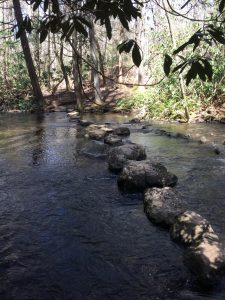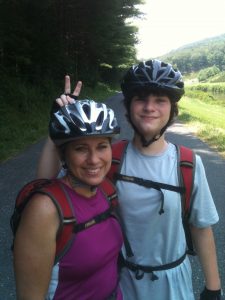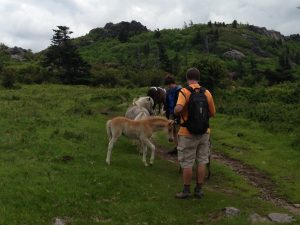
When it comes to kids understanding age, ability, and attentiveness helps ensure these young OUTventurers are safe and having fun.
Chris & Mac
We outventure to help you outventure!
Support Grey Otter Outventures!
Please help us continue to bring you great content:
When it comes to kids, understanding age, ability, and attentiveness helps us ensure they have fun, and are safe on an outdoors adventure.
KIDS – UNDERSTANDING AGE, ABILITY, AND ATTENTIVENESS INCREASES THE FUN
Ability Increases With Age
Age affects ability, especially for kids. This simply means that as kids grow older they are capable of bigger adventures. For example, we would not expect a three-year-old will enjoy or be able to hike a technical mountain trail to reach its summit. Neither would we expect a quarter mile hike to play in a creek will interest or challenge an athletic teen.
However, switch the activities and participants, and both have a great experience. A technical summit hike is an appropriate challenge and results in a pride inducing accomplishment for the teen. Similarly, a short creek hike is a fun activity, and the hike to it is an achievement for the toddler.
For outventure success, it’s simple. Let their age and ability guide your efforts to find fun and engaging outdoor adventures for them. It matters.
Attentiveness Increases With Age
Age, Attentiveness, and Outdoor Safety for Kids
Kids are curious and energetic. They enthusiastically engage with the outdoors, but unfortunately, their curiosity and energy can get them into dangerous situations.
When it comes to kids, their attentiveness increases with age. As such, let not just their age, but their attentiveness guide your efforts to keep them safe. Although age may be a general guide to when a child can be attentive to their own safety, kids of the same age often have different levels of emotional and physical maturity. As such, it is only when a child has developed the mental capacity to understand, internalize, and follow our safety instruction that we can allow them greater autonomy in the outdoors. This generally happens gradually, as they get older.
Outdoor Safety for Older Kids
When it comes to outdoor safety for older kids, they need to be taught how to look out for their own safety. As soon as they have developed the mental capacity to understand and connect their actions to physical danger we can start teaching them. It’s as easy as looking for simple ways to teach them to recognize and minimize the perils they encounter in the outdoors.
For example, rocks are slippery near the edge of a waterfall. We know this makes them dangerous, but kids just see something fun to explore. Embrace this teaching moment! Older kids have the capacity to understand and connect their actions (walking on slippery rocks) with physical danger (getting swept over the falls), so help them learn how to be safe in this environment. Point out examples of such rocks. If safely possible, let them touch a slimy rock so they can understand what you are talking about. Explain that not walking on rocks near a waterfall is “the rule” for waterfall safety. Once they understand why, it is an easy rule to remember.
Outdoor Safety of Young Children
Conversely, young children lack the mental capacity of older kids, but are equally eager explorers. The difference is that they are not yet able to connect personal action with danger in the outdoors, no matter how much we try to explain it. As such, we are responsible for the outdoor safety of young children.
We can let the little ones, under a watchful eye, freely explore the outdoors where hazards are minimal (think grassy, flat, open field). However, when the only way to ensure their safety is with physical contact (such as near an open cliff face or around a waterfall), then don’t think twice about it. No matter how much they may disagree with you, pick them up, hold onto their hand firmly, use a tether, or load them into a carrier pack. No matter how much they object, don’t set them free until they are well away from the hazard.
Final thoughts
Remember above all else, no matter what the age of the child, you want them to have fun! Plan an adventure which is age and ability appropriate, and not only will they have fun, but everyone will be eager for more.
SAFETY DISCLAIMER: The activities discussed in this website are outdoor activities and, as such, have inherent risks to which participants are exposed. It is not the intent of this website, nor is it possible due to the variability of weather, terrain, equipment, and experience, to detail all of those risks. The information contained in this site is informational, but not instructive nor exhaustive. It is the sole responsibility of the user to ensure he/she is in good health, fully prepared, and fully informed as to dangers before undertaking any of the activities discussed in this website and the user does so at his/her own risk. The user understands that by using this website he/she acknowledges and accepts all risks associated with use of information from this website and participation in any particular activity addressed herein. Please see “Terms of Use” for additional information.
Want to share this article with your friends? Click on the share button below:
Want more?
Get the latest outventure updates by following us on social media . . .



